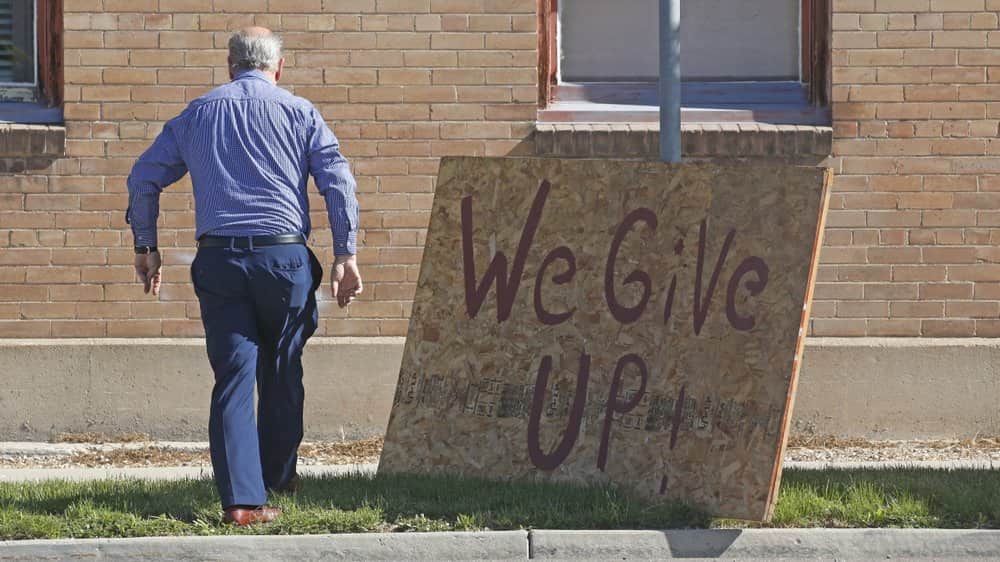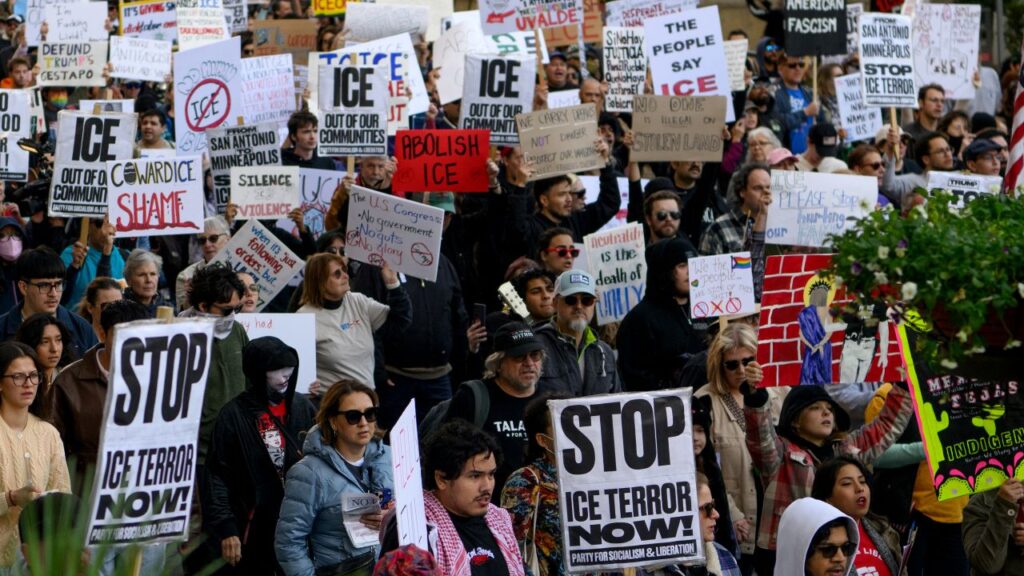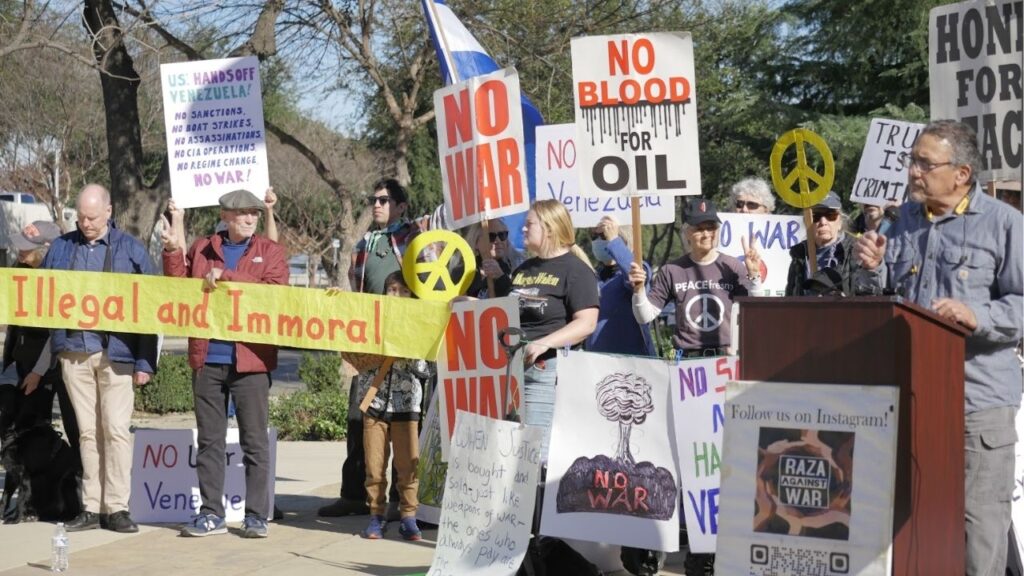Share
BALTIMORE — Brutal. Horrific. Tragic.
Choose your description. The April jobs report showed, in harrowing detail, just how terribly the coronavirus outbreak has pummeled the U.S. economy. Most obviously, there’s the 14.7% unemployment rate, the highest since the Great Depression. And the shedding of more than 20 million jobs, by far the worst one-month loss ever.
But Friday’s jobs report from the government contains 42 pages about just how far the job market has tumbled, along with hints of what to watch for — eventually — in a possible recovery.
Here are 10 major takeaways from the April jobs report:
Even Worse Than It Looks. Really.
The unemployment rate is catastrophically bad. Based on backdated estimates, the rate hasn’t been higher since 1939. But the scary thing is that the April figure actually downplayed how bleak things are.
Heidi Shierholz, the former chief economist for the Labor Department, noted on that 6.4 million people who were out of work in April didn’t look for a job and so weren’t even counted as unemployed. Include them and the unemployment rate jumps to roughly 19%, she tweeted.
An additional 7.5 million workers appear to have been mistakenly classified as “employed, not at work” when they were actually jobless last month and should have been counted as unemployed, said Shierholz, who now works at the liberal Economic Policy Institute. Add them into the mix and the unemployment rate screeches up to 23.6% — not far below the all-time unemployment peak of roughly 25% from 1933.
Workers Still Hopeful
Of the roughly 20.6 million people who lost jobs in April, roughly three-fourths described their unemployment, perhaps optimistically, as “temporary.” This means that more than 18 million Americans expect to return to their workplaces soon. Even if they all regained their jobs quickly — something almost no one expects — the unemployment rate would likely dip below 10% but still remain high.
Most economic forecasts expect any rebound to be much slower than the coronavirus-induced collapse, which arrived suddenly and violently. Temporary layoffs could quickly become permanent. Major stores such as Neiman Marcus and J.Crew have filed for bankruptcy protection. Restaurants deprived of revenues are starting to announce permanent closures. The Congressional Budget Office estimates that the unemployment rate will be 11.7% in the final three months of this year, an indication that many jobs will not return by then.
EPOP? What’s That?
Before the viral outbreak, about 60% of all U.S. adults — everyone from students to working-age people to retirees — were employed. This figure is known as the “employment-to-population ratio,” or EPOP.
The EPOP sank in April to 51.3%, its lowest level on record. For African-Americans and people with only high school diplomas, it dropped below 50%. This figure might be more instructive in some ways than the unemployment rate, which reflects whether people who are out of a job are looking for a new one.
The EPOP, by contrast, simply measures the proportion of adults who are working. And with it now showing that barely half of American adults is employed, the economy will struggle to improve unless the ratio rises.

Bleak Times for Immigrants
Perhaps no group has suffered as dramatic a reversal of fortune as foreign-born workers. Their unemployment rate was 2.7% a year ago, even lower than the rate for native-born Americans. But it jumped to 16.5% in April as 5.7 million immigrants lost jobs compared with a year ago.
The main reason is that immigrants work disproportionately in occupations that have been especially devastated by the viral outbreak — from hotels and restaurant work to cleaning services and construction. These job losses matter for the recovery, because immigrants, who are critical to those industries, might move elsewhere if tighter restrictions are imposed on their work visas.
Republican Senators Tom Cotton of Arkansas, Ted Cruz of Texas, Charles Grassley of Iowa, and Josh Hawley of Missouri sent a letter Thursday to President Donald Trump that seeks to suspend guest worker visas for a year. With fewer immigrants, the pool of potential workers in those hard-hit industries would shrink — a risk for an eventual recovery that will depend on how quickly jobs can be restored.
College Pays Off
College graduates were far more likely to keep their jobs in April. Their unemployment rate was 8.4%. That’s still high, but it’s significantly lower than the national average of 14.7%. People with college and advanced degrees entered the recession with a big advantage: They held jobs that made it easier to work from home.
The Bureau of Labor Statistics reported that 41.7% of people with an advanced degree worked from home on an average day in 2018. And slightly more than a third of people with a college degree did so. But just 11.9% of high school graduates worked from home. That limitation made them more vulnerable to layoffs.
We’re Working Less
Not surprisingly, the job losses mean that the United States as a whole is working fewer hours. The index of total hours worked has collapsed 15% from a year ago. This matters because it cuts to the heart of how an economy grows: Economies expand only if more people are working or if the people who are working become more productive.
Fewer People Holding Multiple Jobs
Over the past two months, 2.6 million people have lost their second or third jobs. These people are still counted as employed, but they’ve lost a chunk of their incomes. There were nearly 8.1 million people who held multiple jobs in February. By April, that total had plummeted to 5.5 million.
Nearly 1.2 Million Disabled Americans Lost Jobs
African-Americans, Latinos and high school graduates were each more likely to suffer job losses than the national average. But people with disabilities also faced harsh challenges in April. Nearly 1.2 million of them lost jobs, and their unemployment rate reached 18.9%.
These losses were a troubling reversal of the gains that disabled workers had been making in recent months as the benefits of what was the longest expansion in American history was finally reaching them.
Consumers Retreating
No sector suffered as severe a decline as retail and leisure and hospitality. The job losses there point to the dizzying falloff in consumer spending as a result of stay-at-home orders, and they hint at the devastation that could persist for years.
Retailers shed a stunning 2.1 million jobs last month. Theaters, concert halls and the sports industry lost 217,000. The film and recording industries cut 216,500 jobs as production stopped. Over the past two months, nearly half the 12 million jobs at restaurants and bars have disappeared.
Collectively, all this points to much less consumer spending and enormous uncertainty about whether or when it might recover. Economists expect the U.S. retail sales report for April being released next week will show a monthly decline of 10% after an 8.4% fall in March.
Pay Growth a False Flag
In any typical jobs report, April’s average pay gains would look fantastic: Average hourly earnings jumped 7.9% from a year ago. This would normally be greeted by high-fives from economists and from lawmakers up for re-election. But it’s really a disturbing sign. Average pay rose that much only because the lowest-paid workers lost their jobs and were excluded from the calculation.
Consider what happened with all those layoffs at bars and restaurants: Average wages actually surged 9.4% because the highest paid workers kept their jobs. Likewise, pay at retailers climbed 8.8%.
By contrast, average hourly earnings in the information sector — which includes telecommunications and contains fewer low-wage jobs — increased only 3.1%.



















